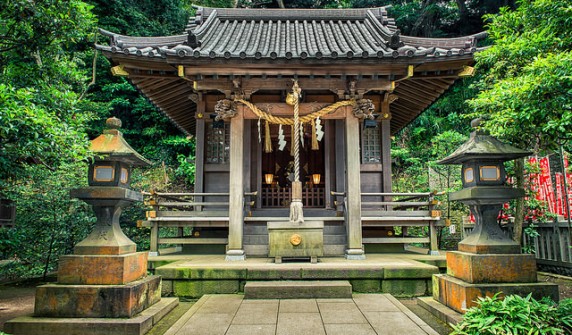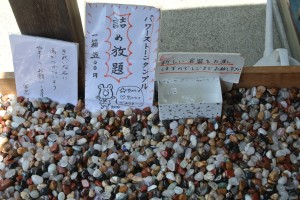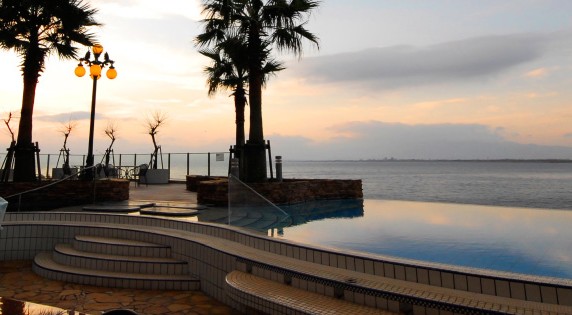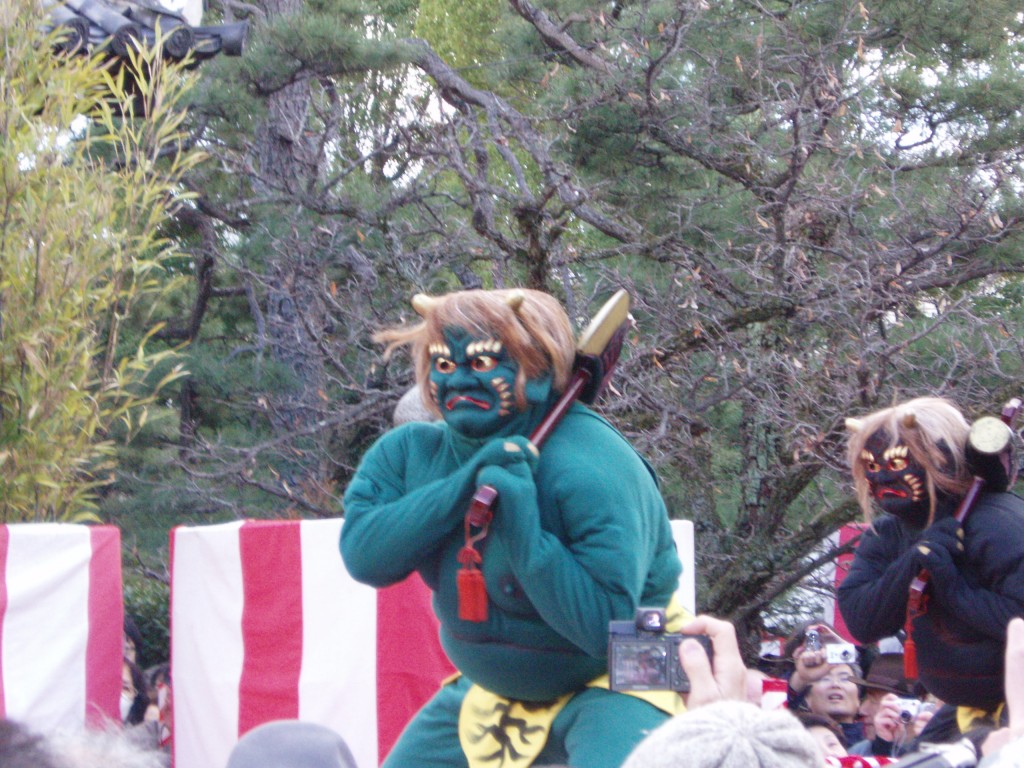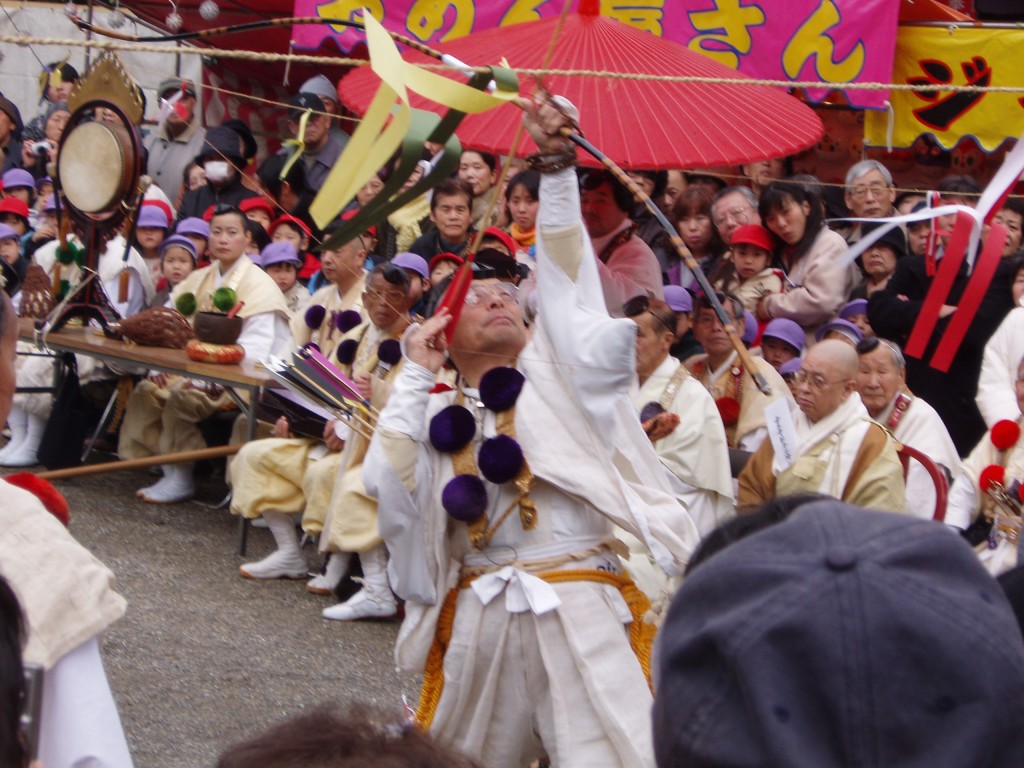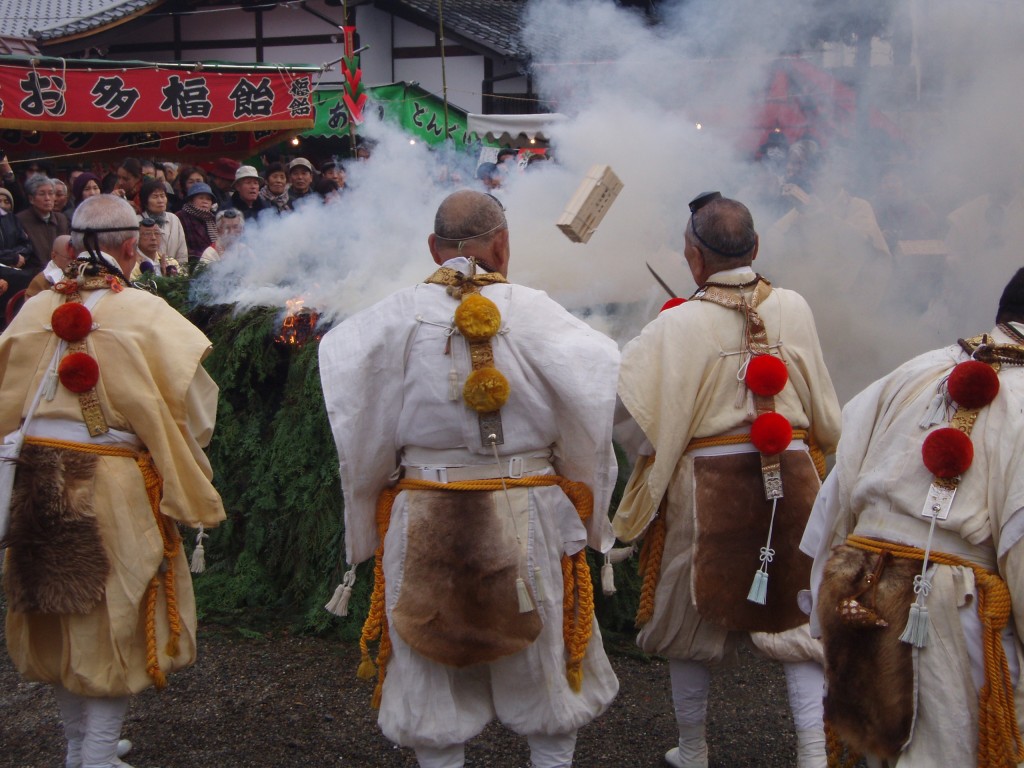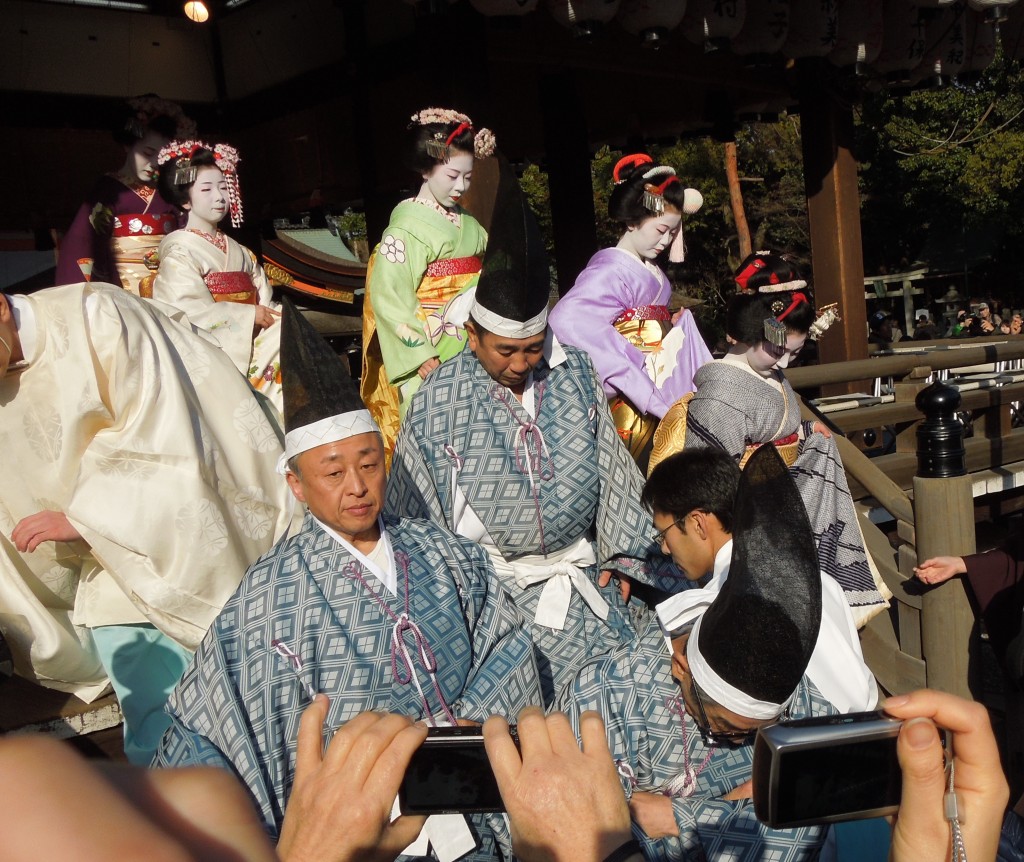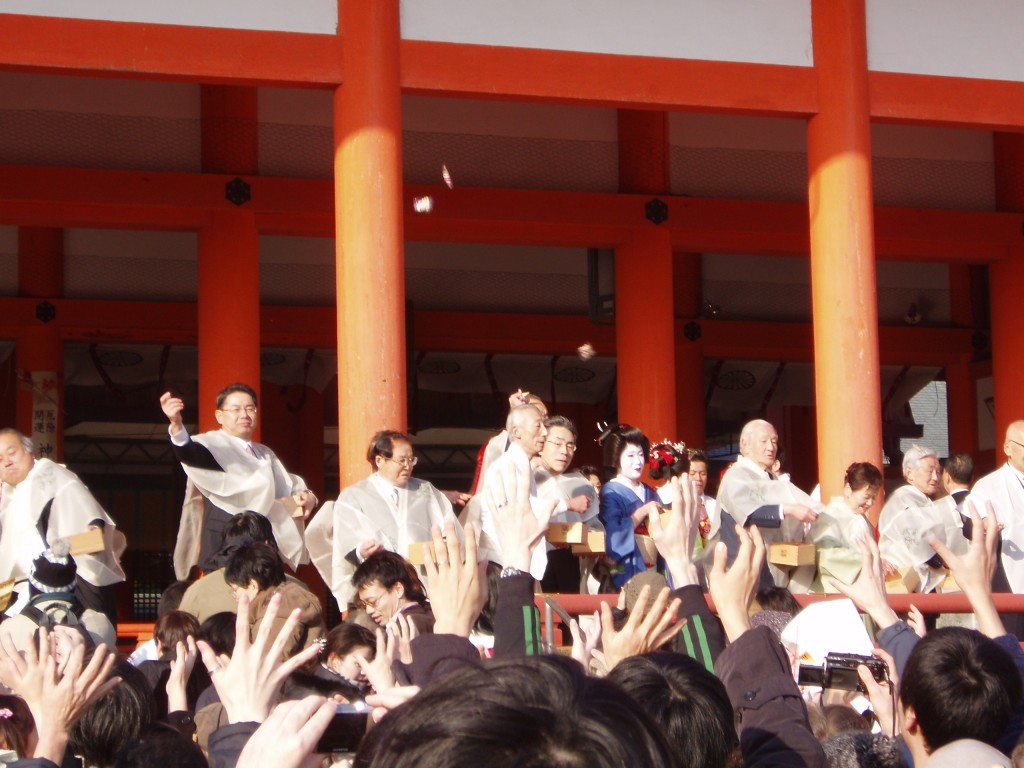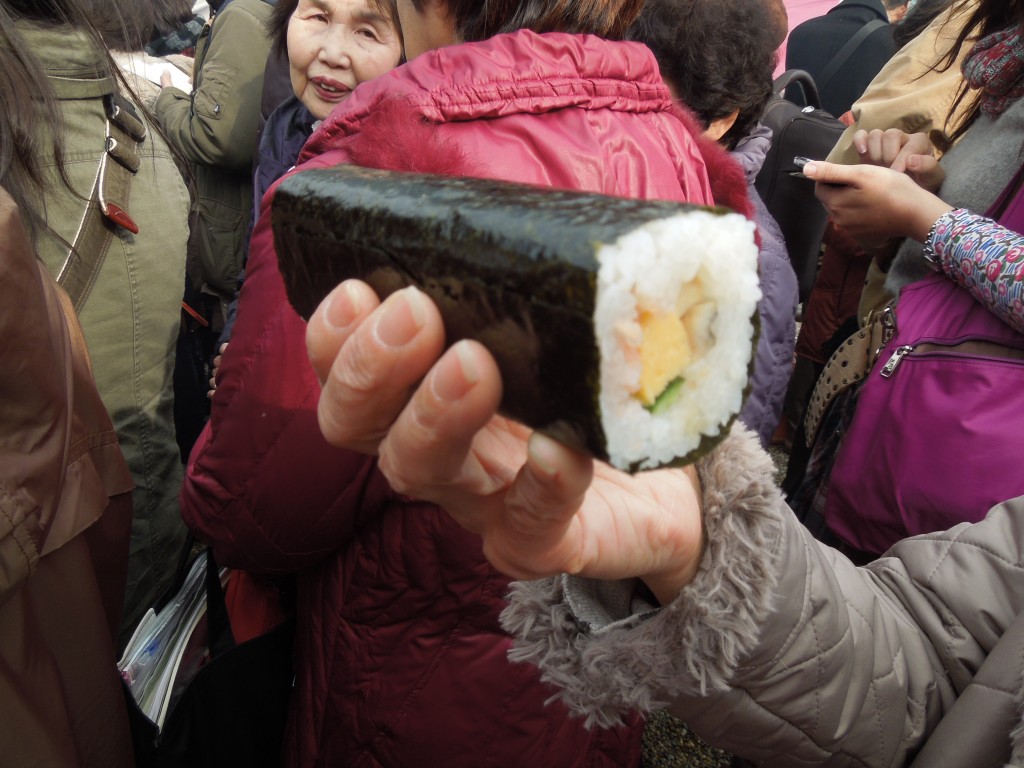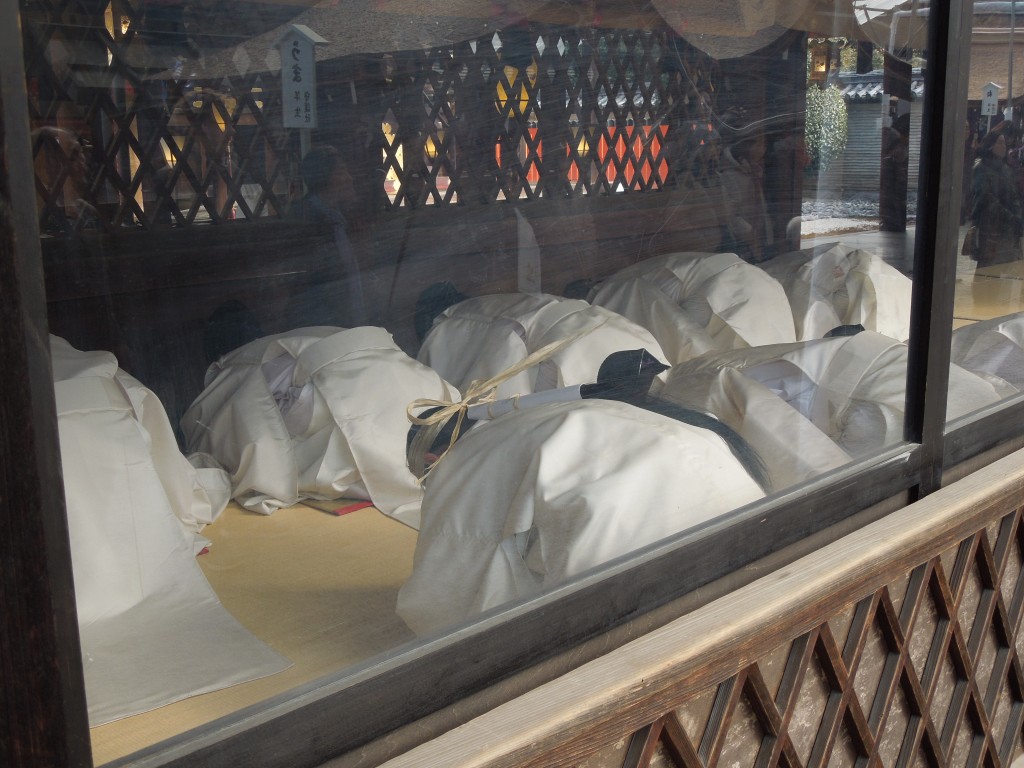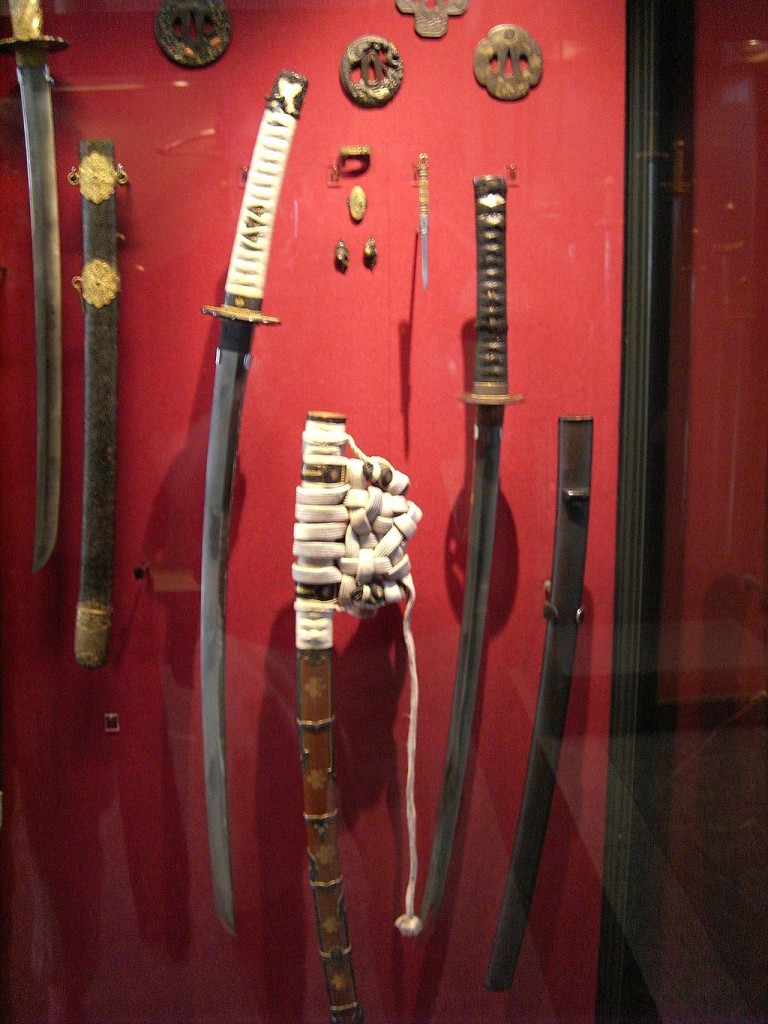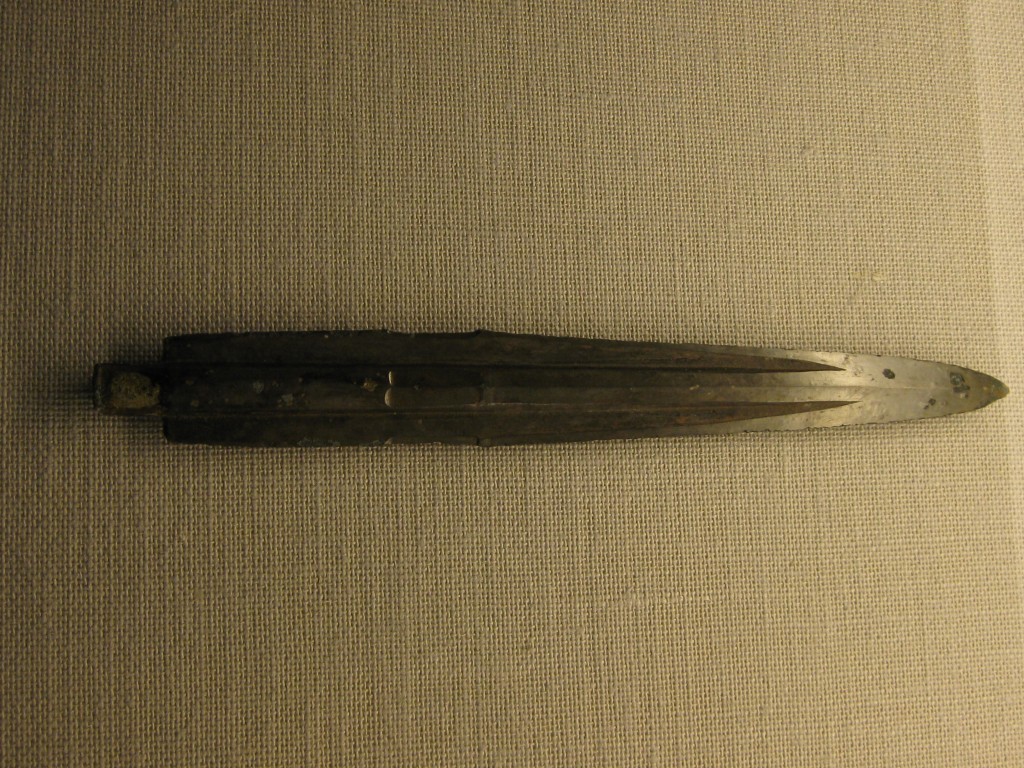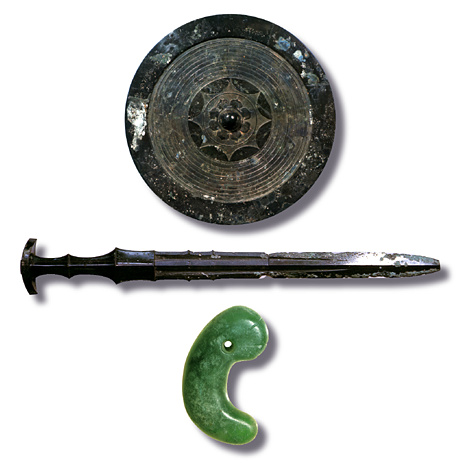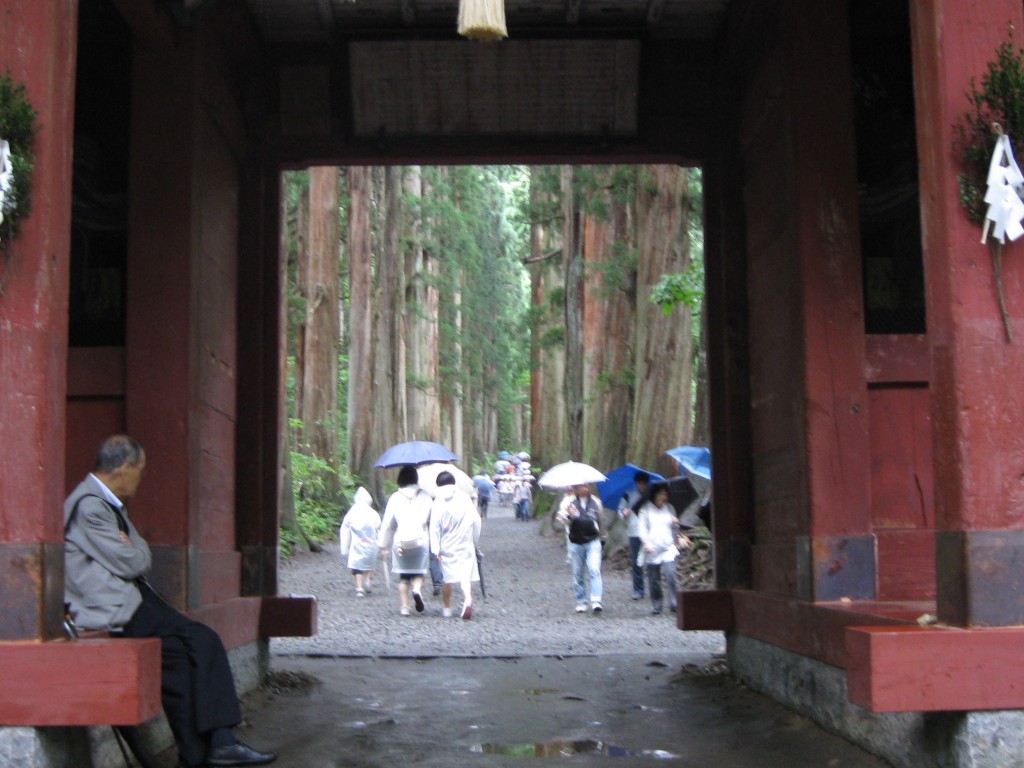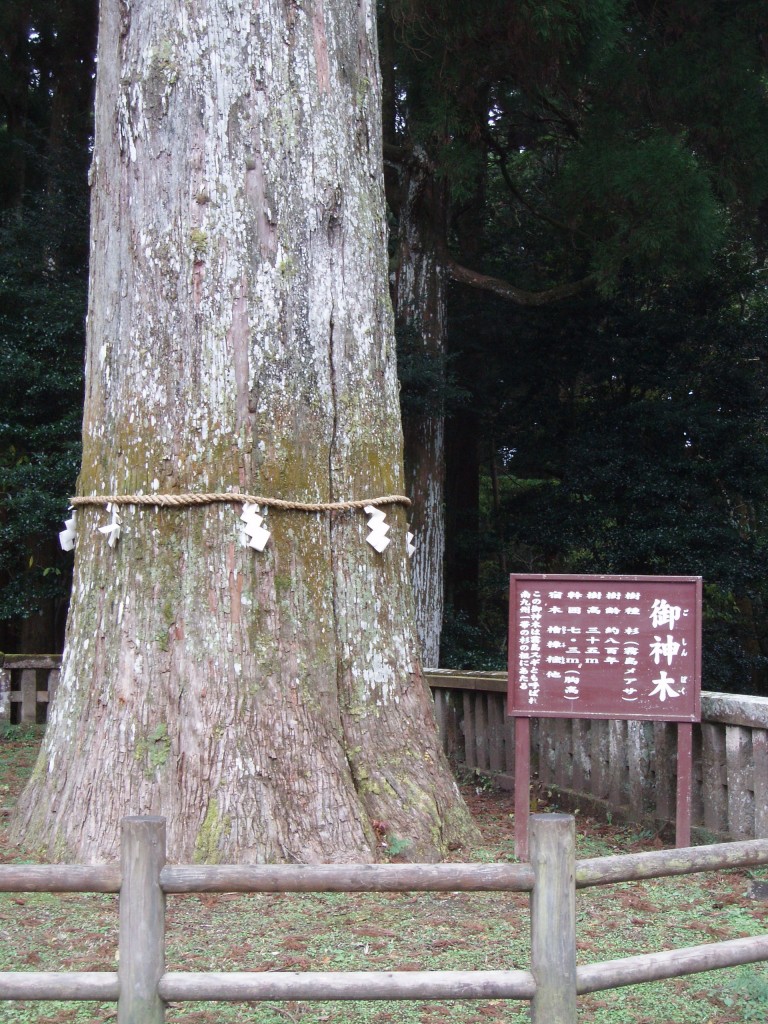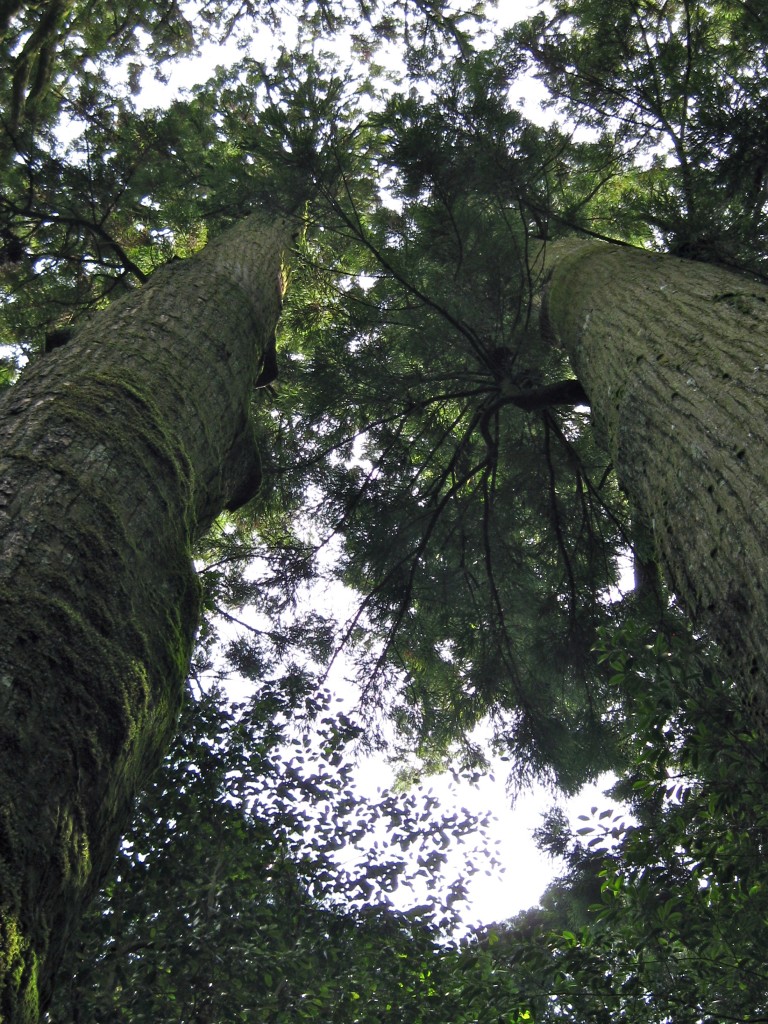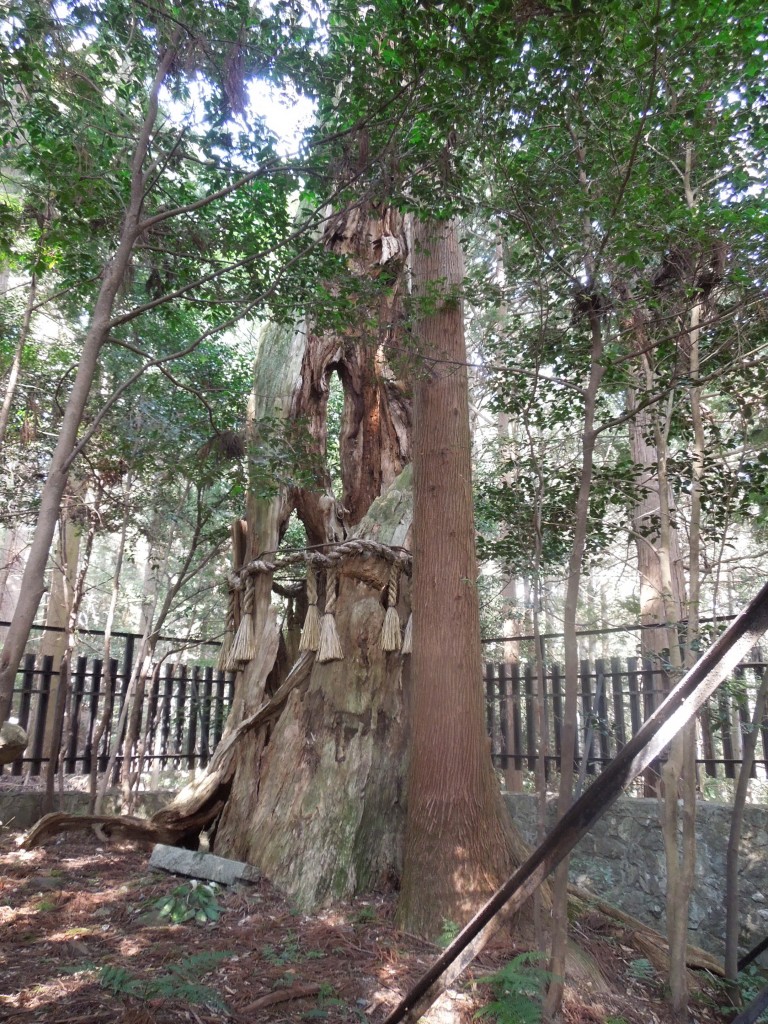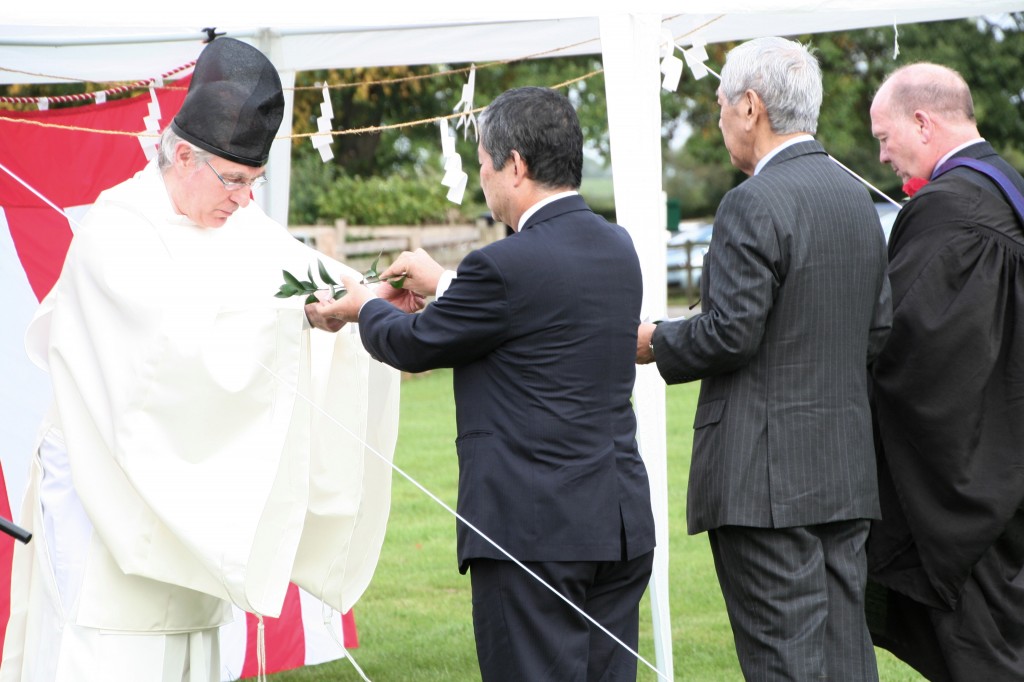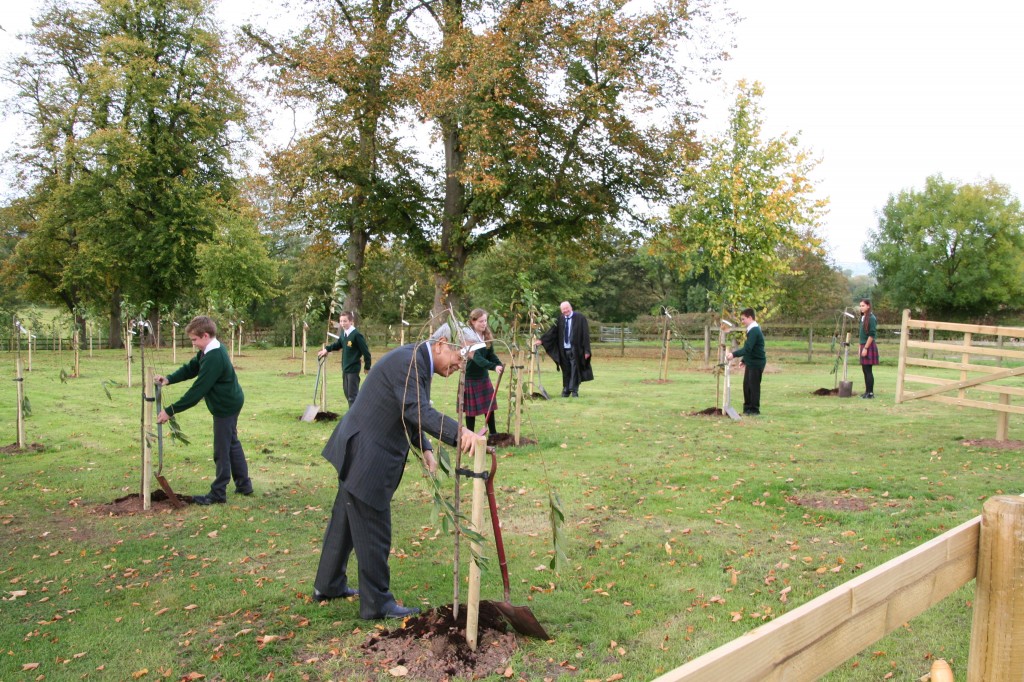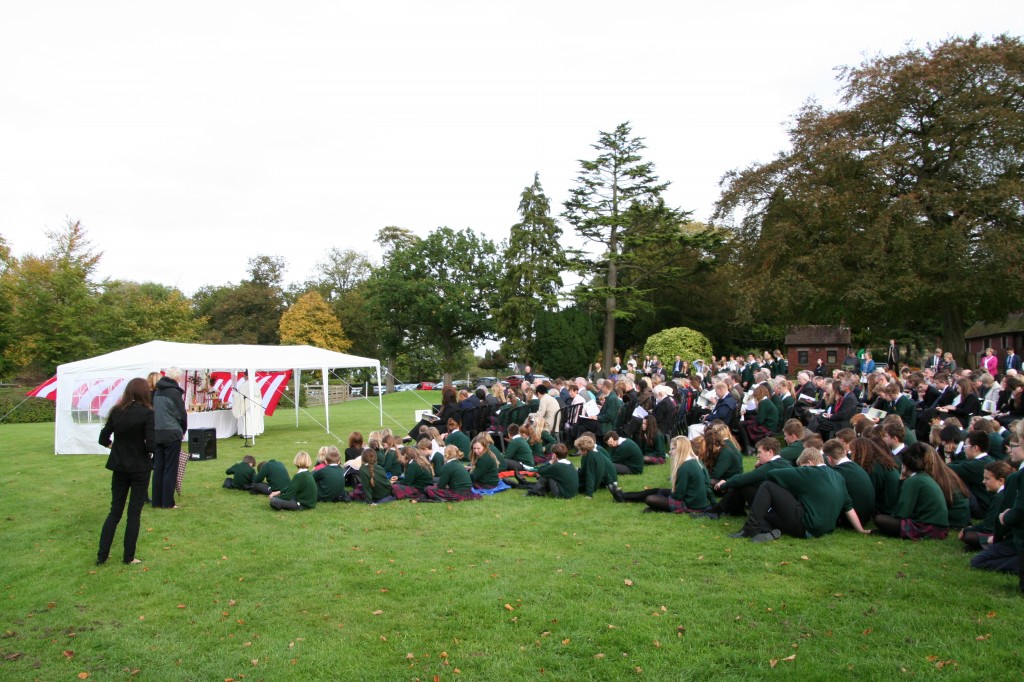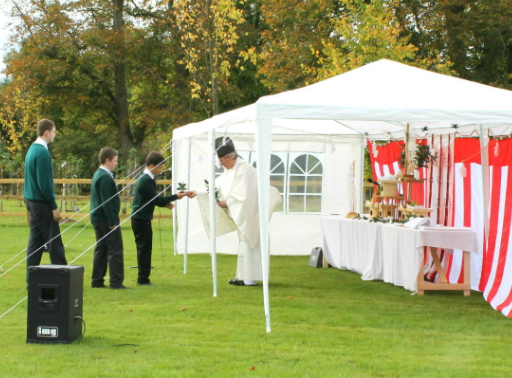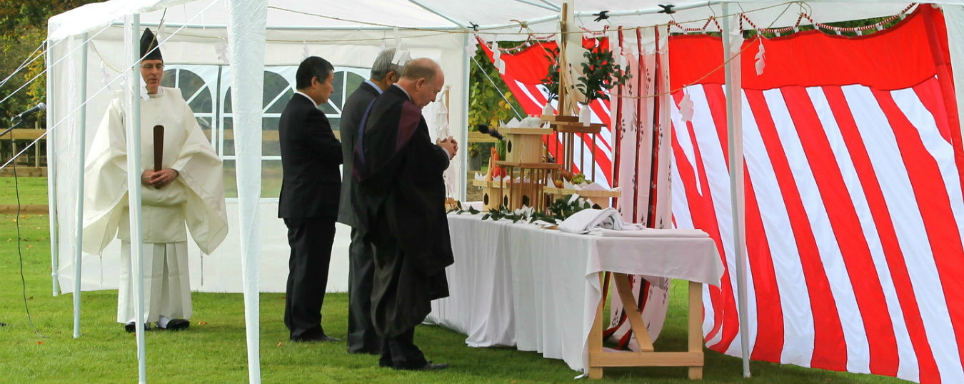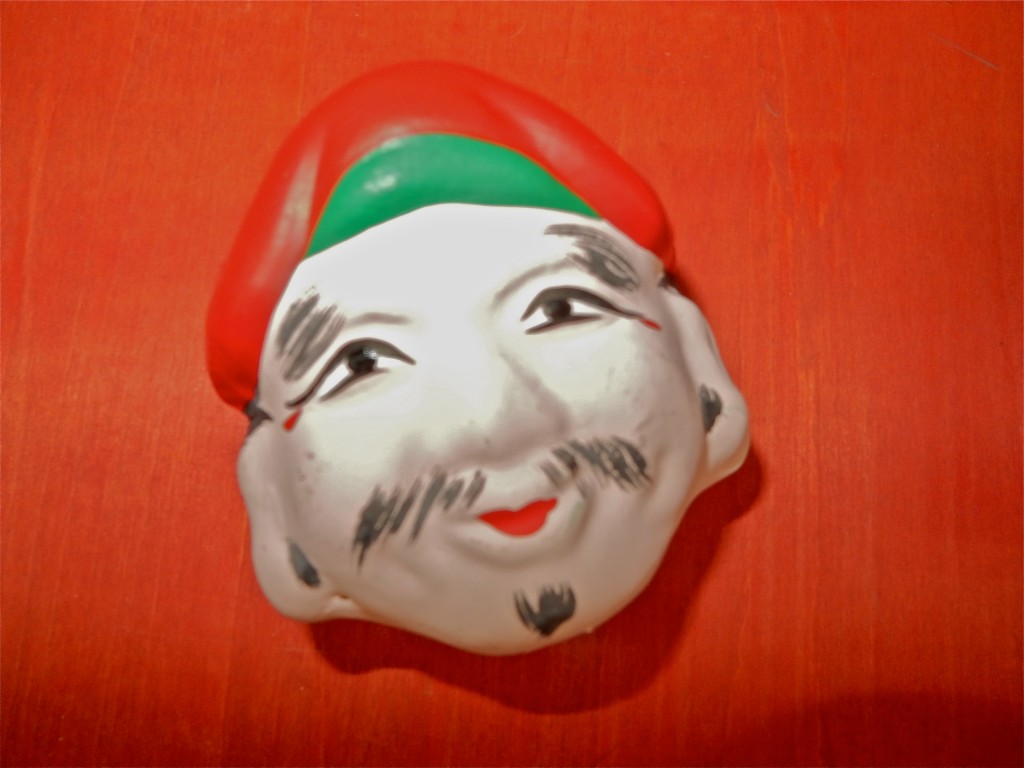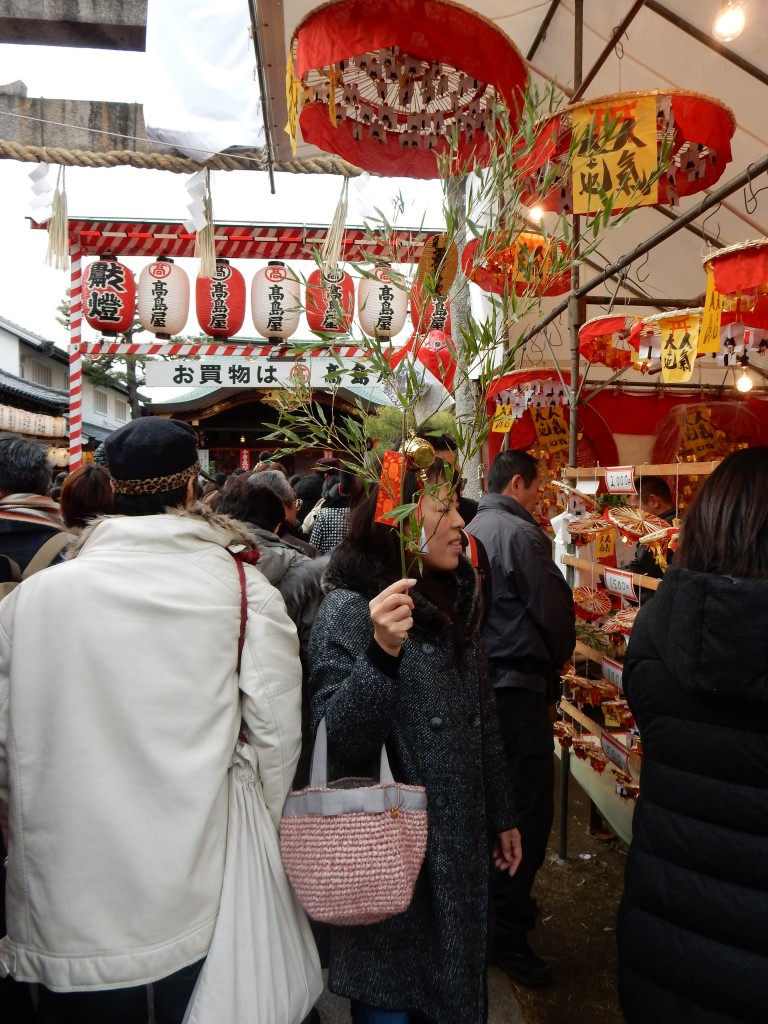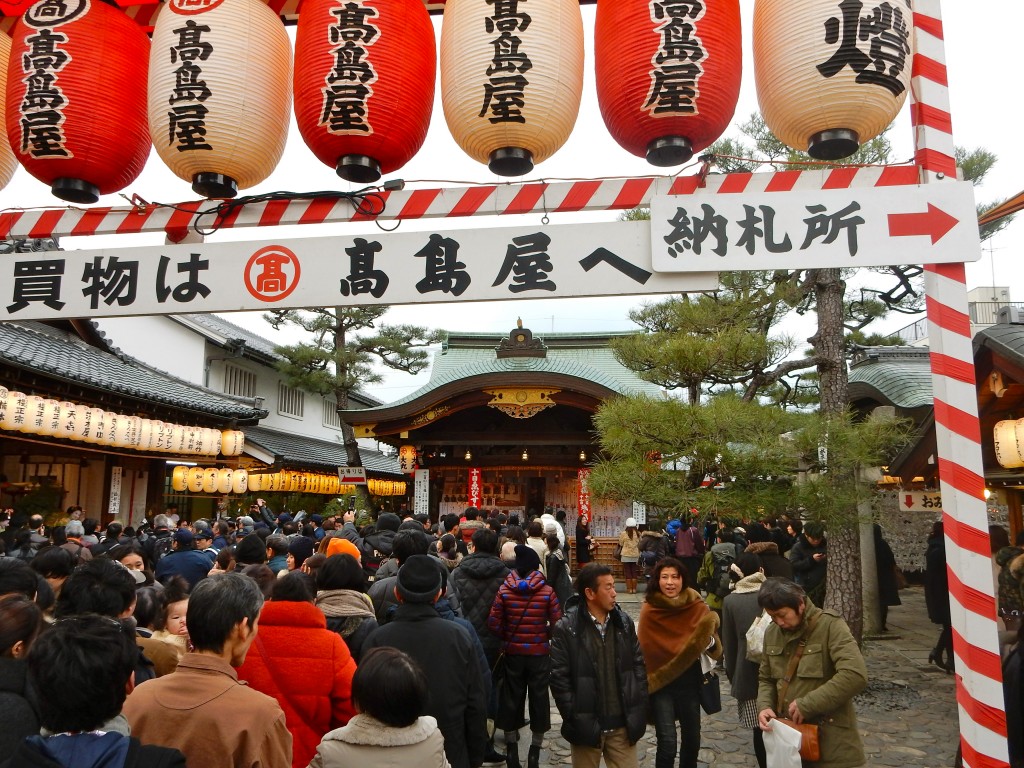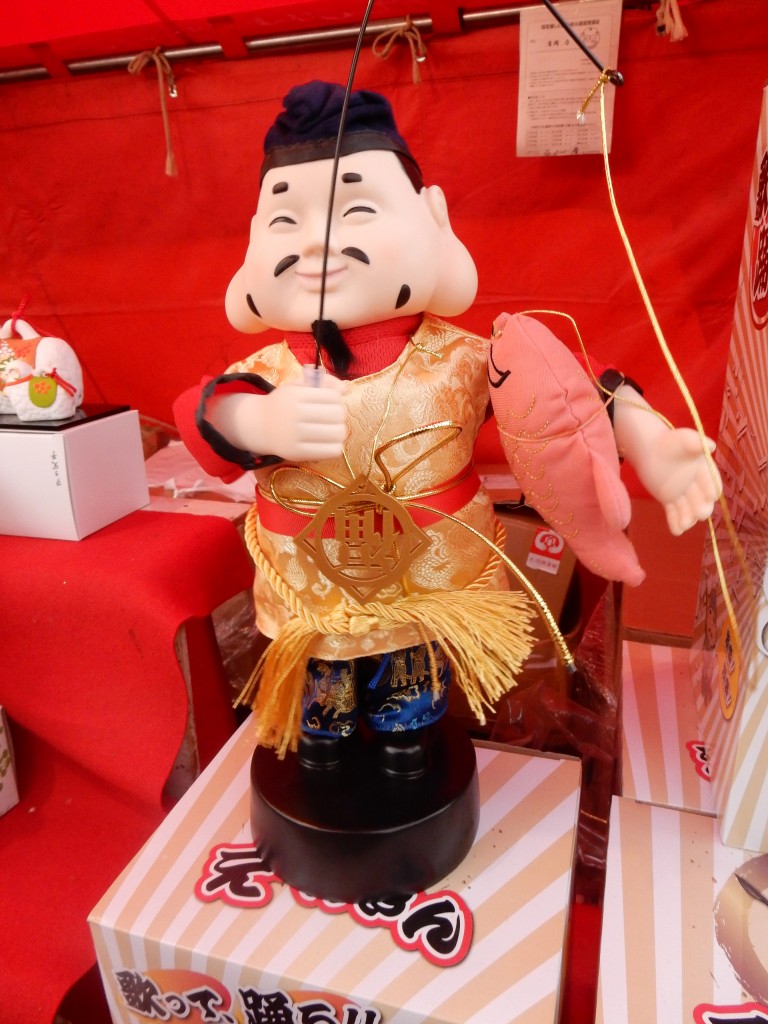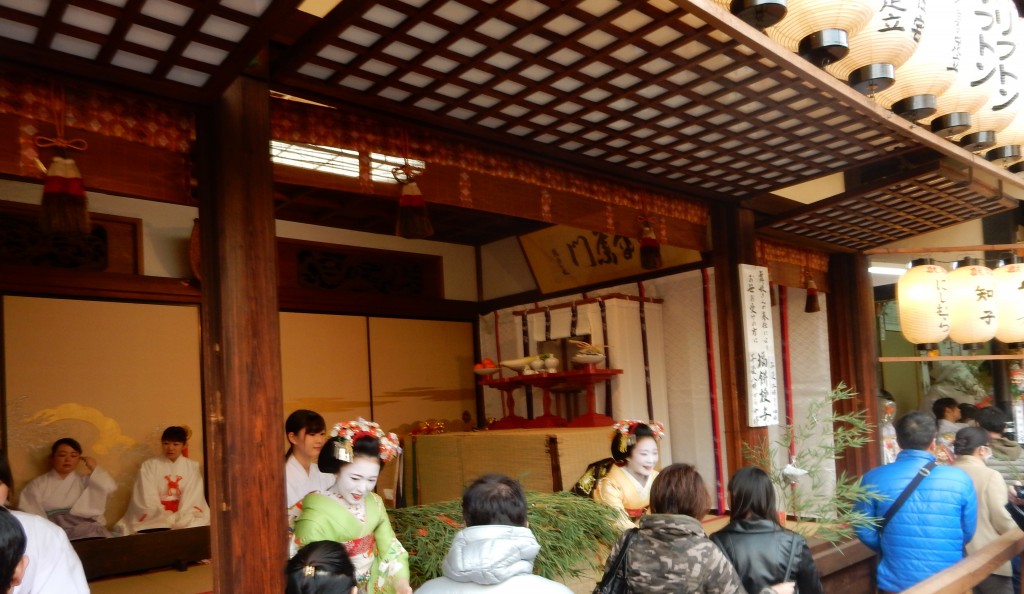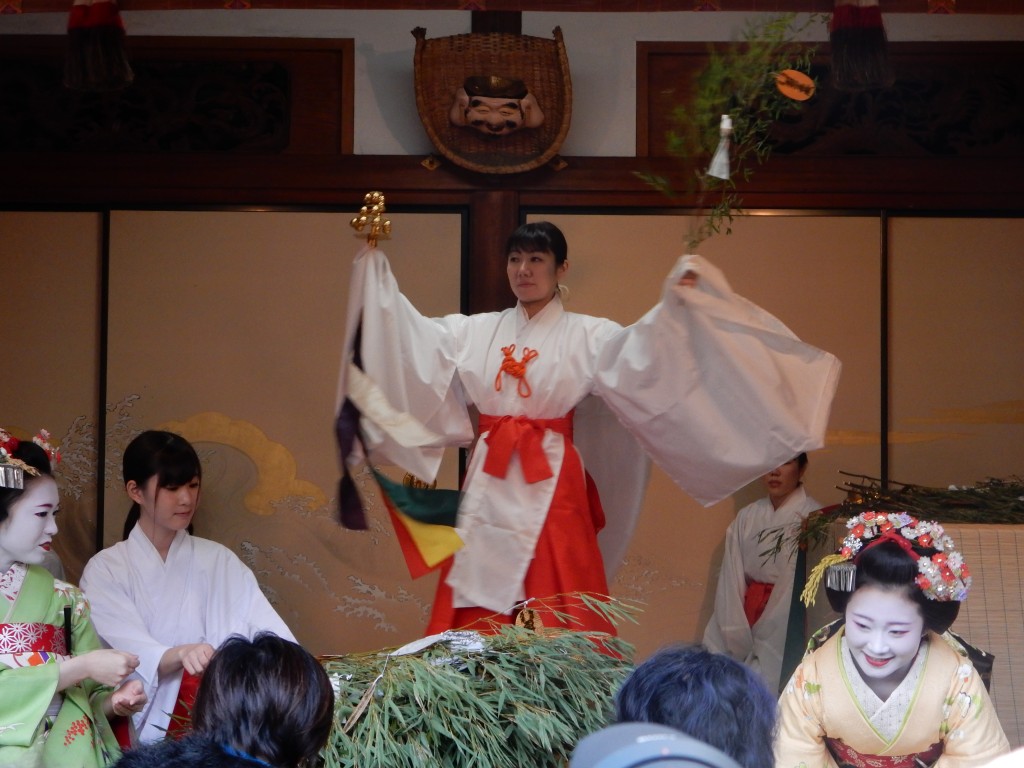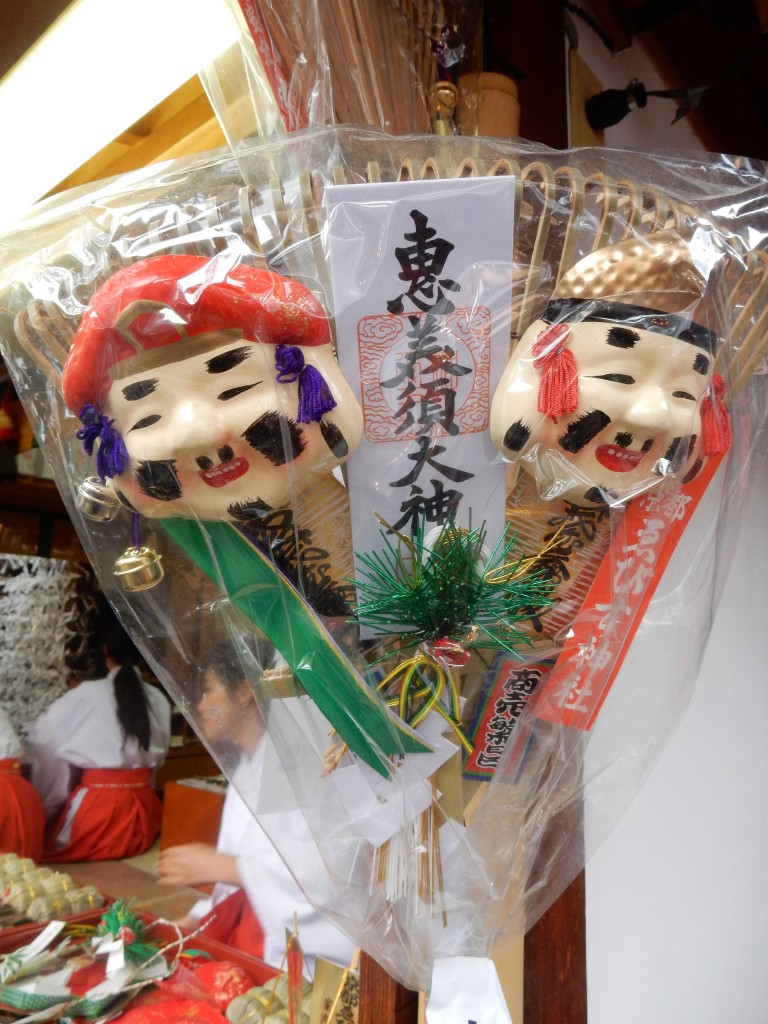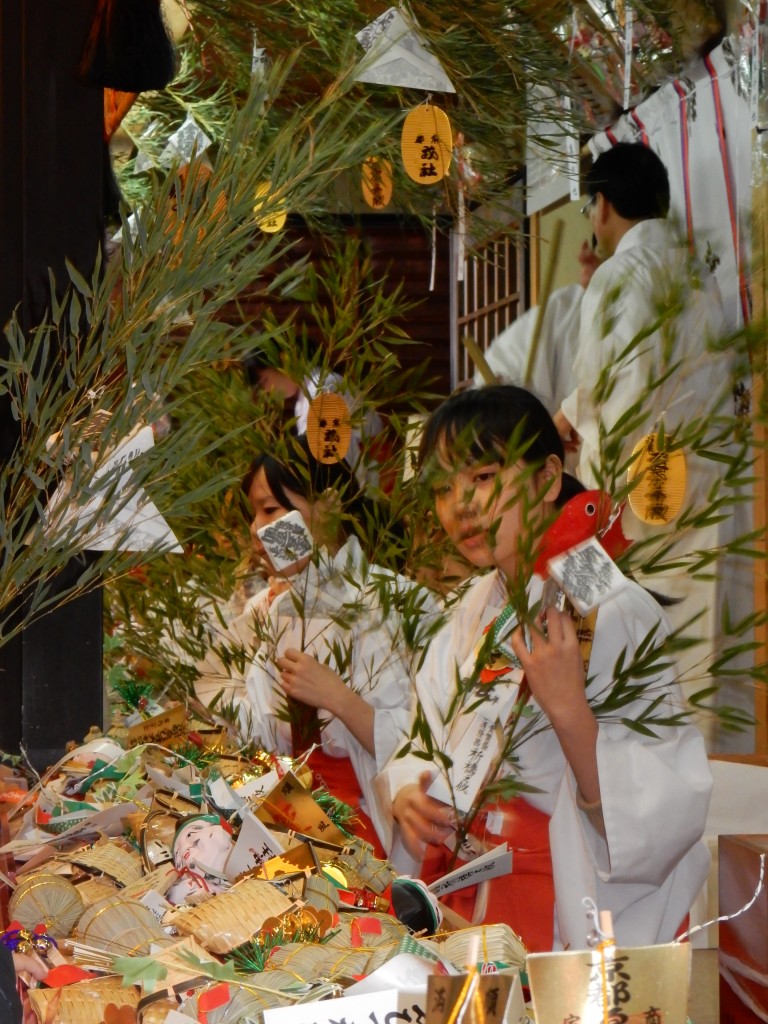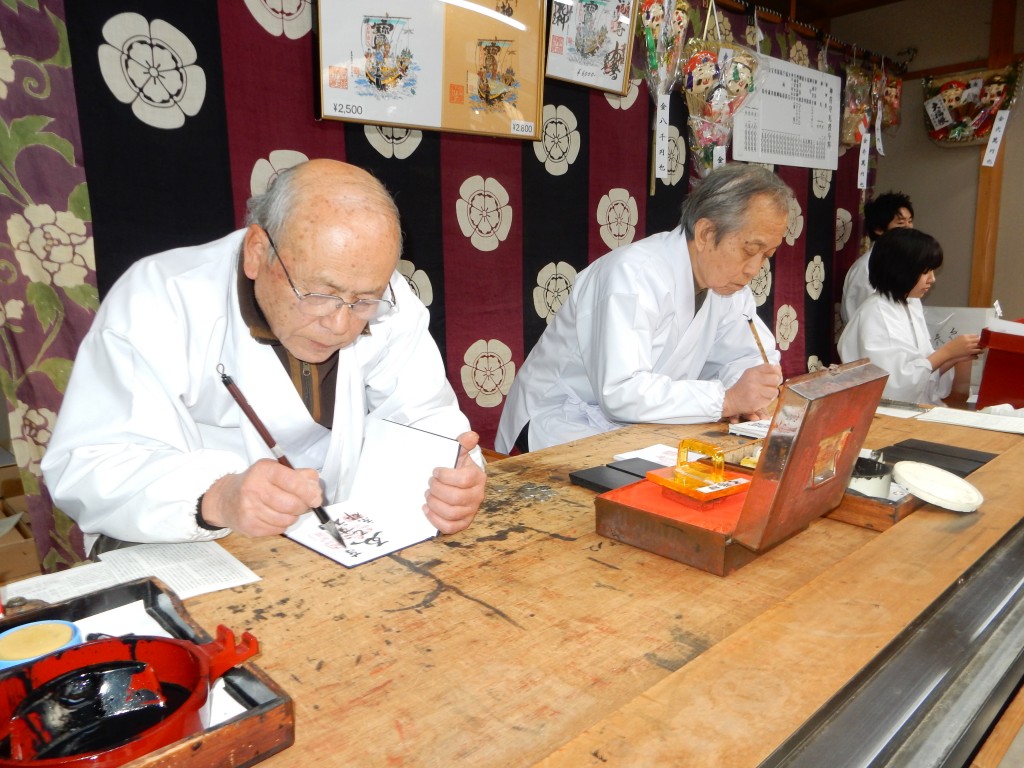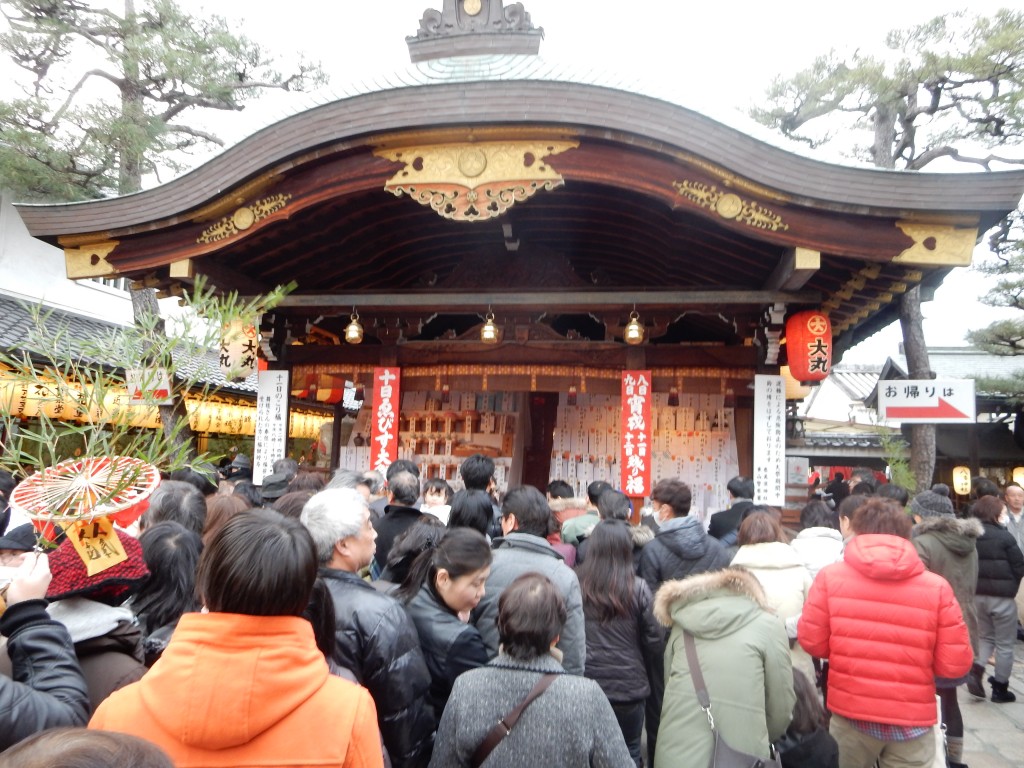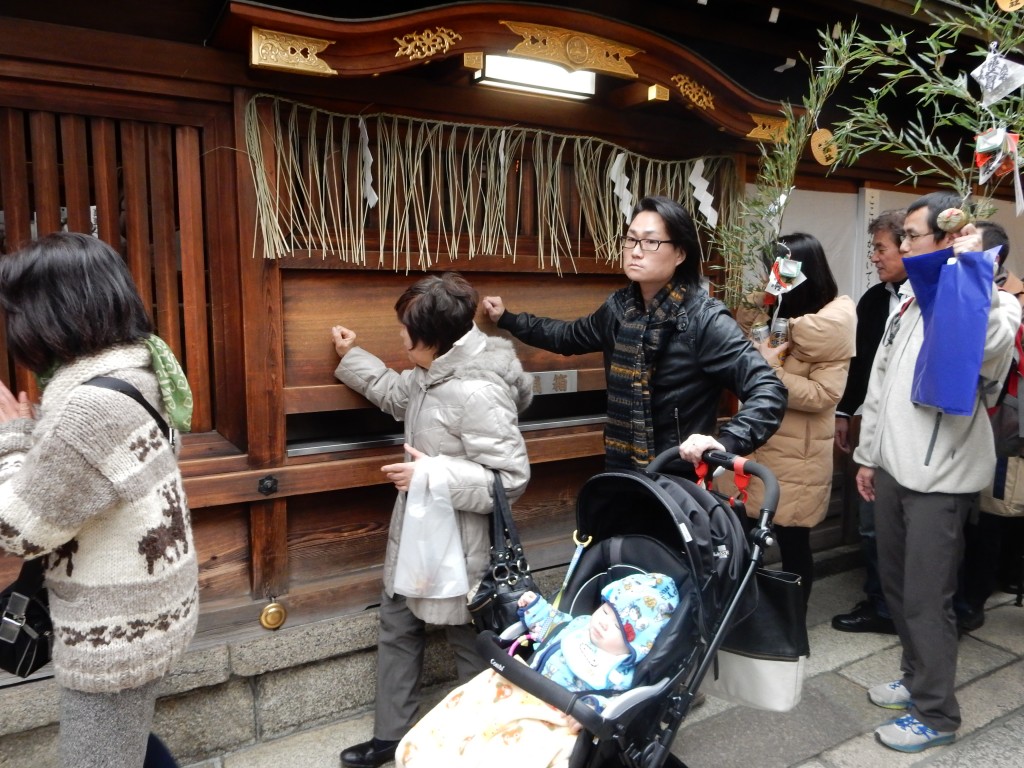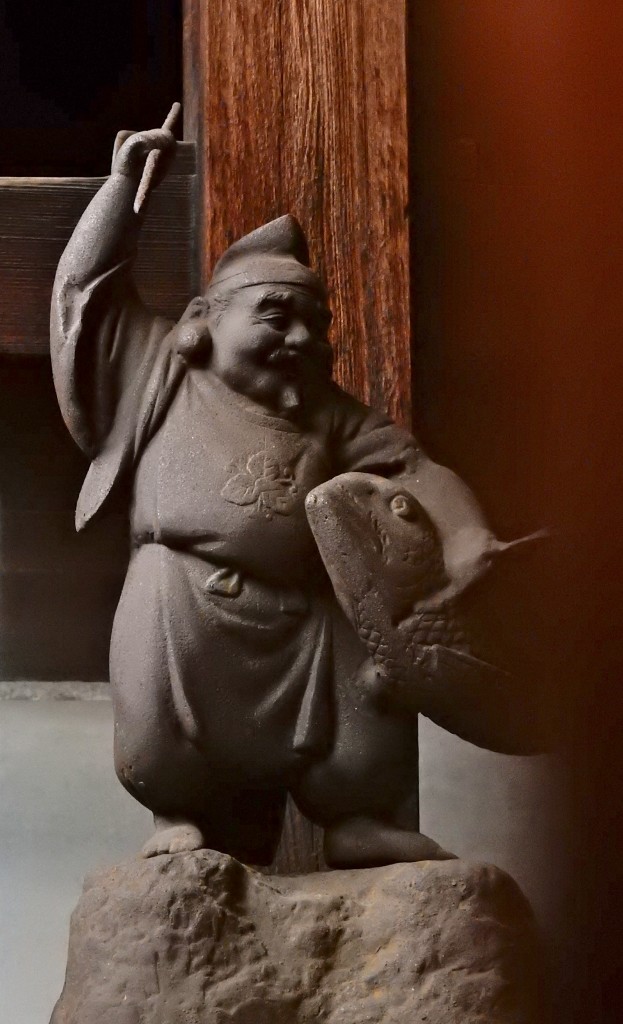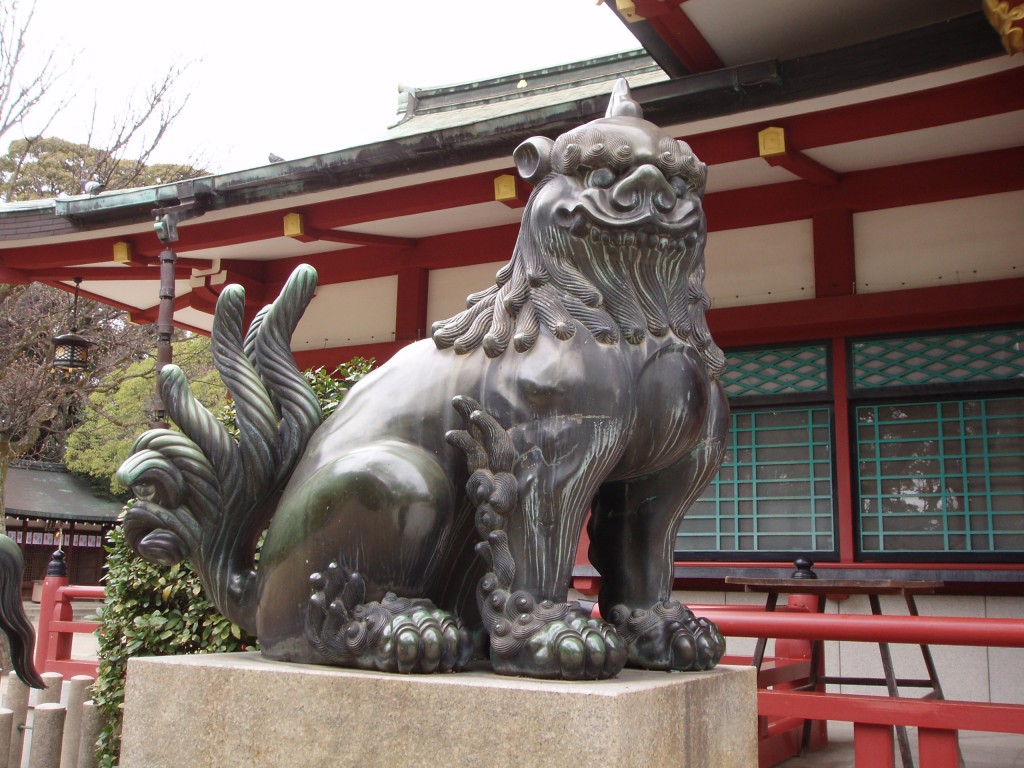
A smart komainu guardian at Nishinomiya Shrine
At every shrine there are a pair of guardians who protect the grounds from evil spirits trying to enter. The stylised komainu (Korean dogs) are characterised by having one mouth open and one mouth shut. It signifies ‘ah-un’ which in Sanskrit are the first and last letters of the alphabet. In other words, the beginning and end of all things. The transmission from India was through Buddhism, and komainu are deeply syncretic. In Shinto terms the pair could be said to act as a team to exclude evil on the one hand (shut mouth) and swallow them up on the other (open mouth).
The article below comes from Wikipedia and is interesting for showing how the Chinese guardian lion evolved into the komainu as we know them today.
*********************************************
Komainu strongly resemble Chinese guardian lions and in fact originate from Tang dynasty China. The Chinese guardian lions are believed to have been influenced by lion pelts and lion depictions introduced through trade from either the Middle East or India, countries where the lion existed and was a symbol of strength.
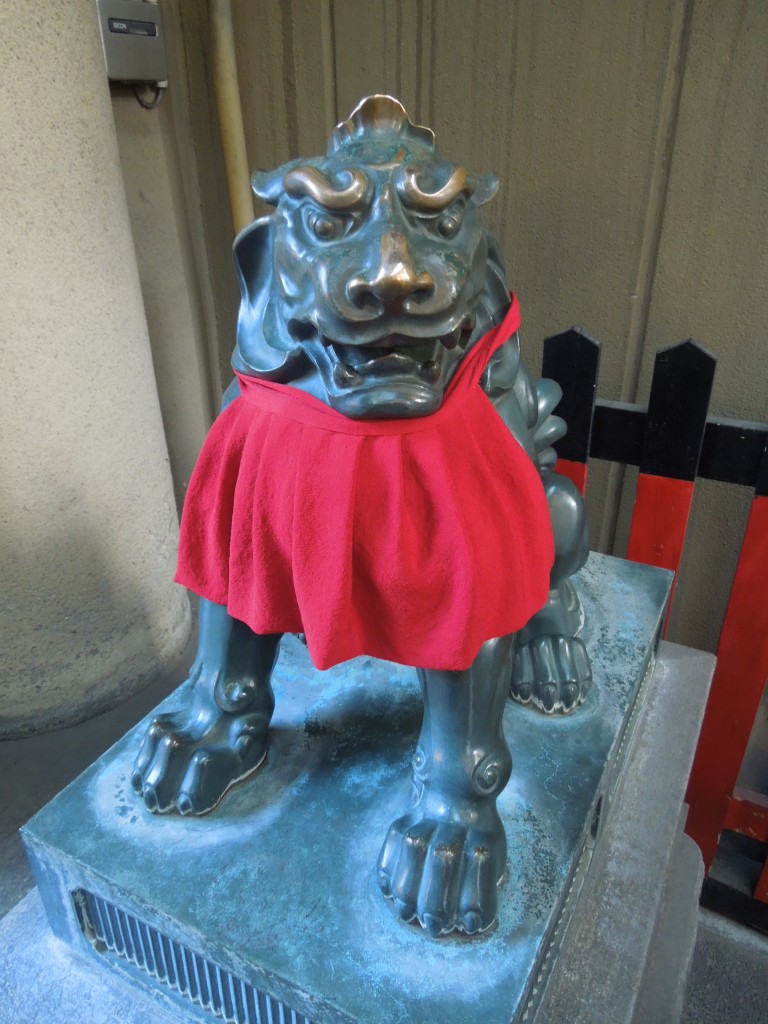
A komainu with reb bib at Shimogamo Jinja
During its transportation along the Silkroad, however, the symbol changed, acquiring a distinctive look. The first lion statue in India appears around the 3rd century BC on top of a column erected by King Ashoka. The tradition later arrived in China where it developed into the guardian lion that was later exported to Korea, Japan, and Okinawa.
During the Nara period (710–794), as in the rest of Asia, the pair always consisted of two lions. Used only indoors until the 14th century, they were made mainly of wood. During the Heian period (794–1185), for example, wooden or metal pairs were employed as weights and door-stops, while at the Imperial Palace they were used to support screens or folding screens.
During the early Heian period (ninth century), the tradition changed and the two statues started to be different and be called differently. One had its mouth open and was called shishi (獅子 lion) because, as before, it resembled that animal. The other had its mouth closed, looked rather like a dog, was called komainu, or “Koguryo dog”, and sometimes had a single horn on its head. Gradually the animals returned to be identical, but for their mouths, and ended up being called both komainu.
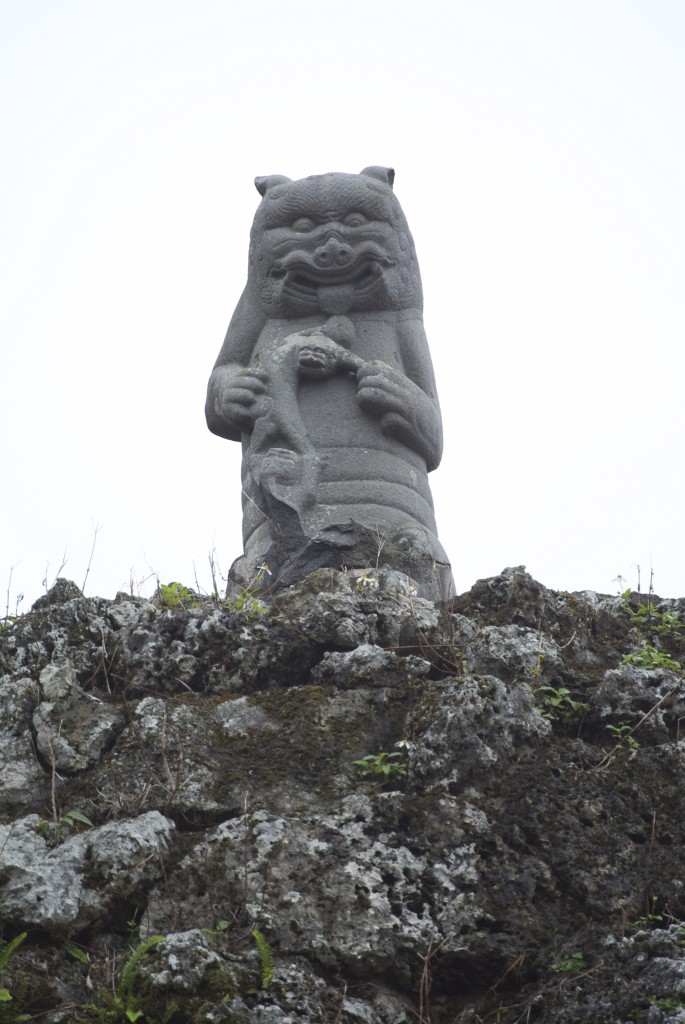
Okiinawan shisa guarding the Tamaudun royal mausoleum
Ubiquitous as they are now at shrines, Komainu have been used outdoors only since the 14th century. In Asia, the lion was popularly believed to have the power to repel evil, and for this reason it was habitually used to guard gates and doors. In Japan, too it ended up being installed at the entrance of shrines and temples next to the lion-dog. As a protection against exposure to Japan’s rainy weather, the komainu started being carved in stone.
The shīsā (シーサー), the stone animals that in Okinawa guard the gates or the roofs of houses, are close relatives of the shishi and the komainu, objects whose origin, function and symbolic meaning they share. Their name itself is centuries old regional variant of shishi-san.
Starting from the Edo period (1603–1868) other animals have been used instead of lions or dogs, among others wild boars, tigers, dragons and foxes.
The most frequent variant of the komainu theme is the fox, guardian of shrines dedicated to kami Inari. There are about 30 thousand Inari shrines in Japan, and the entrance of each is guarded by a pair of fox statues. Often one, and sometimes both, has a sūtra roll, a key or a jewel in its mouth. (Sūtras are Buddhist texts, a fact which attests to the Buddhist origins of the Inari cult.)
The statues do not stand for the malice the animals are proverbial for, but for the magic powers they are believed in this case to possess. Sometimes the guardians are painted, and in that case they are always white. White foxes are messengers of the kami, who is sometimes himself believed to be, and portrayed as, a fox. Although visible genitals are rare, the left fox is believed to be male, the right one female.
Often the foxes wear red votive bibs similar to those worn by statues of other deities, for example Buddhist god Jizō, from which one expects some kind of favor in return. In this case however the bibs seem to be purely a rite, whose origins are unclear.
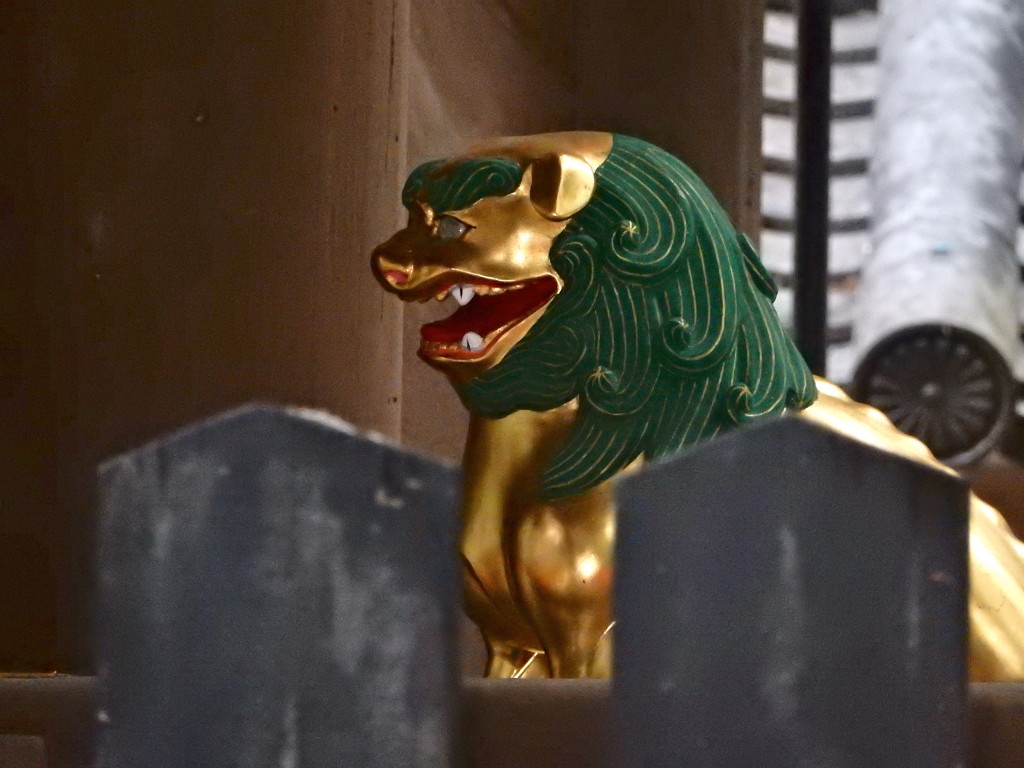
A golden komainu at Kamigamo Jinja
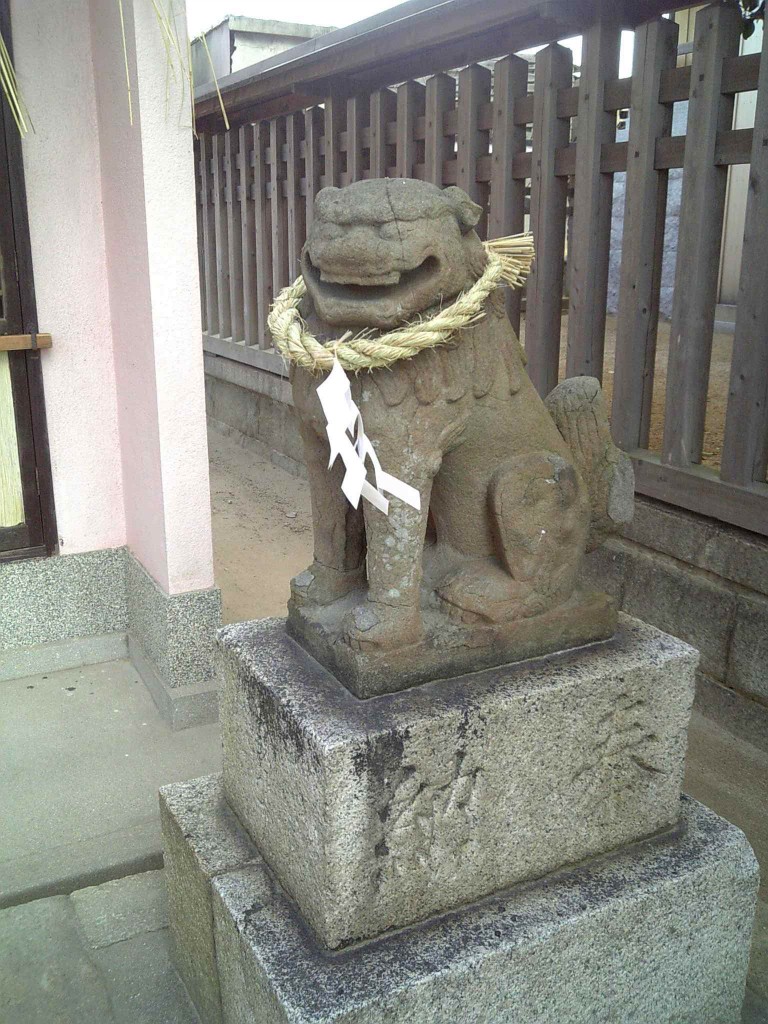
Komainu with shimenawa rope at Tarumi Jinja
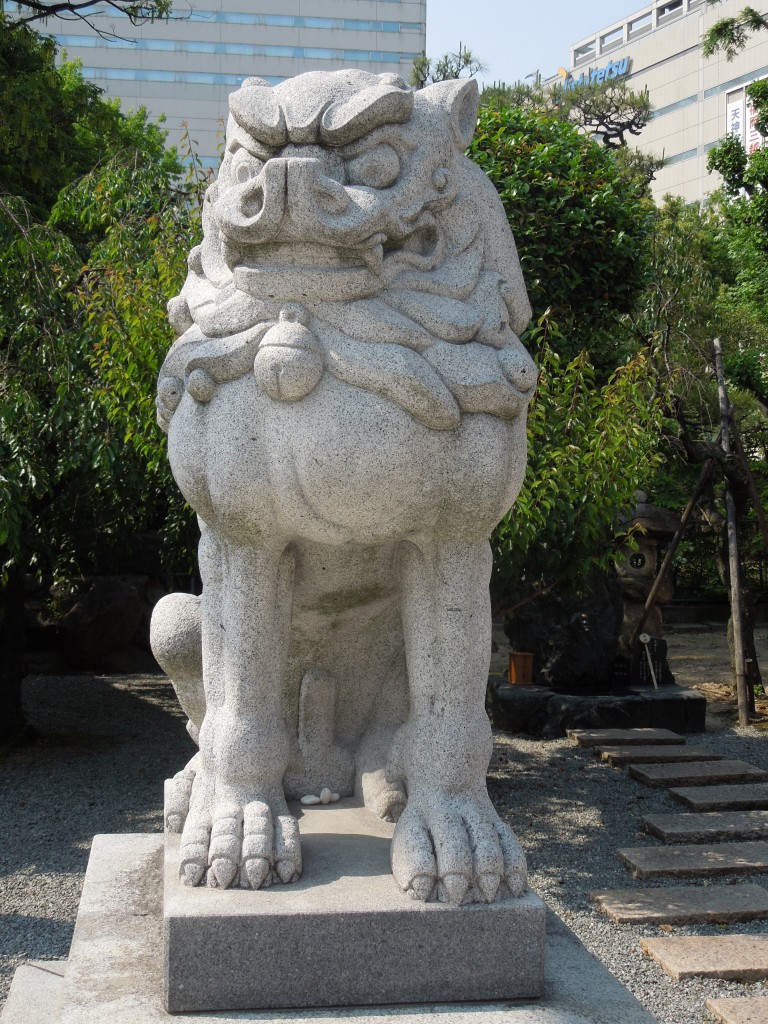
Some are decidedly male, as this specimen at Kego Shrine in Fukuoka
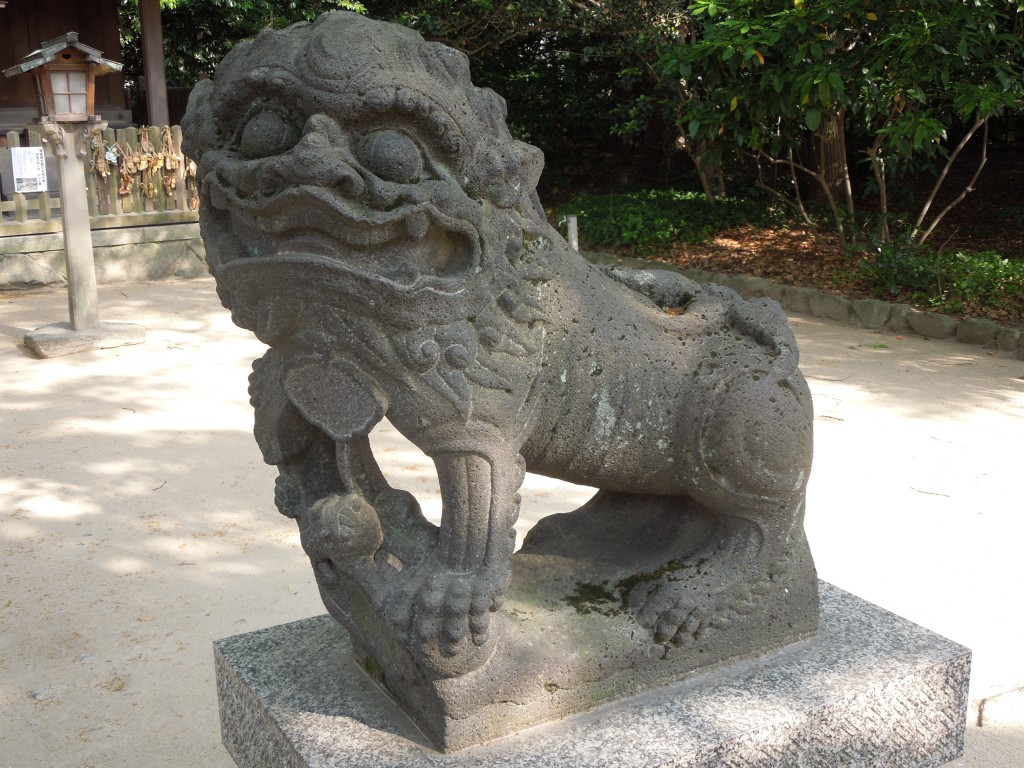
Komainu come in all guises....
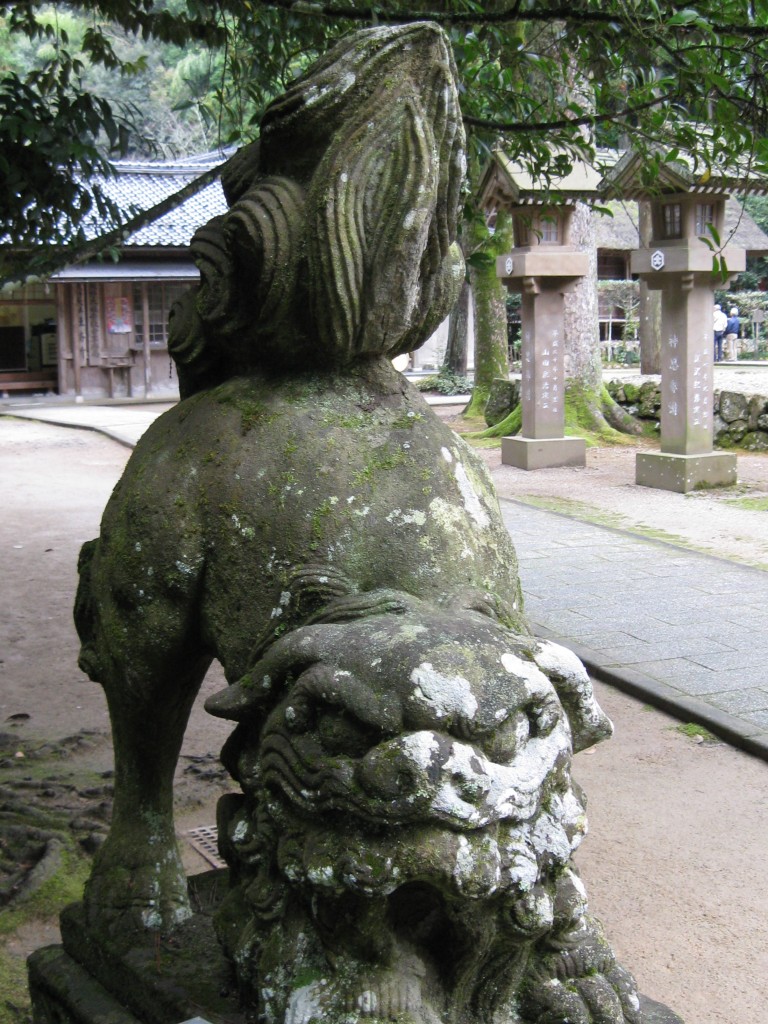
.... sometimes crouching down, as here at Kumano Taisha......
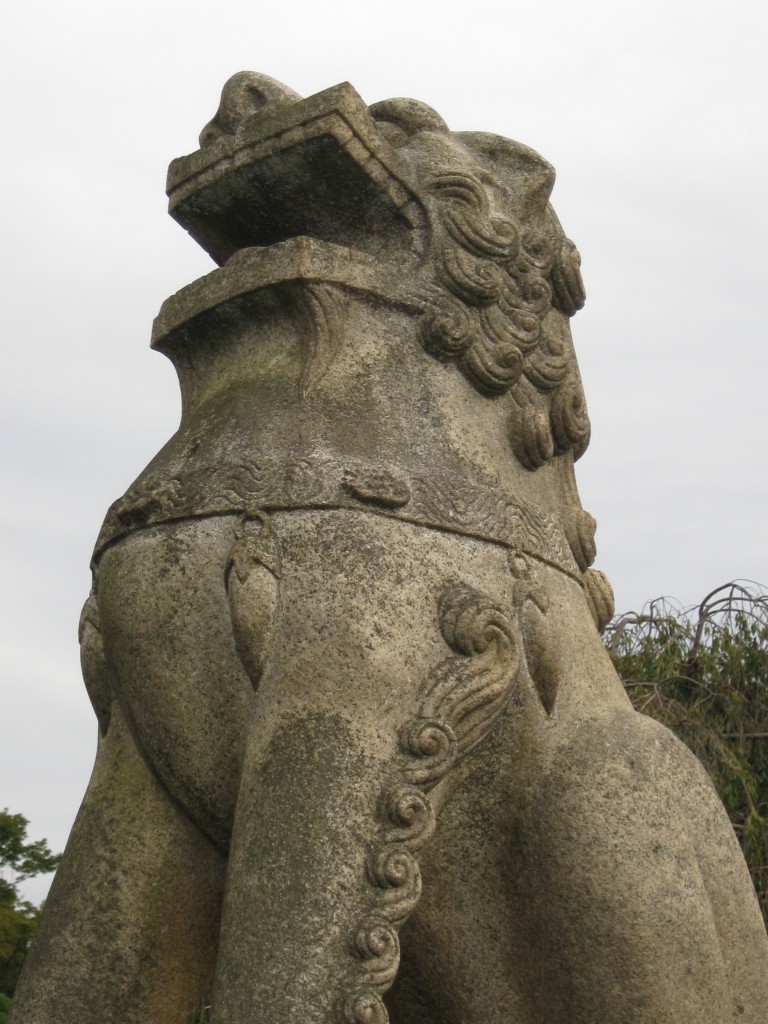
... sometimes sitting up and square-mouthed, as here at Jishu Jinja...
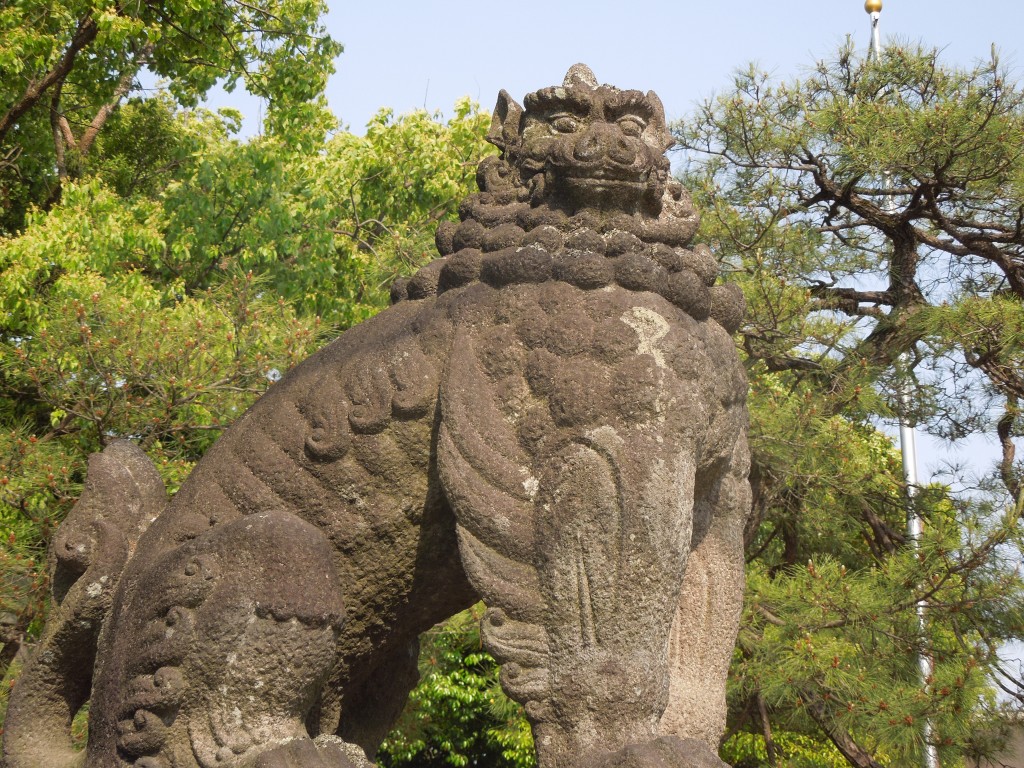
... and sometimes oddly proportioned, as here at Hakozaki Shrine in Fukuoka
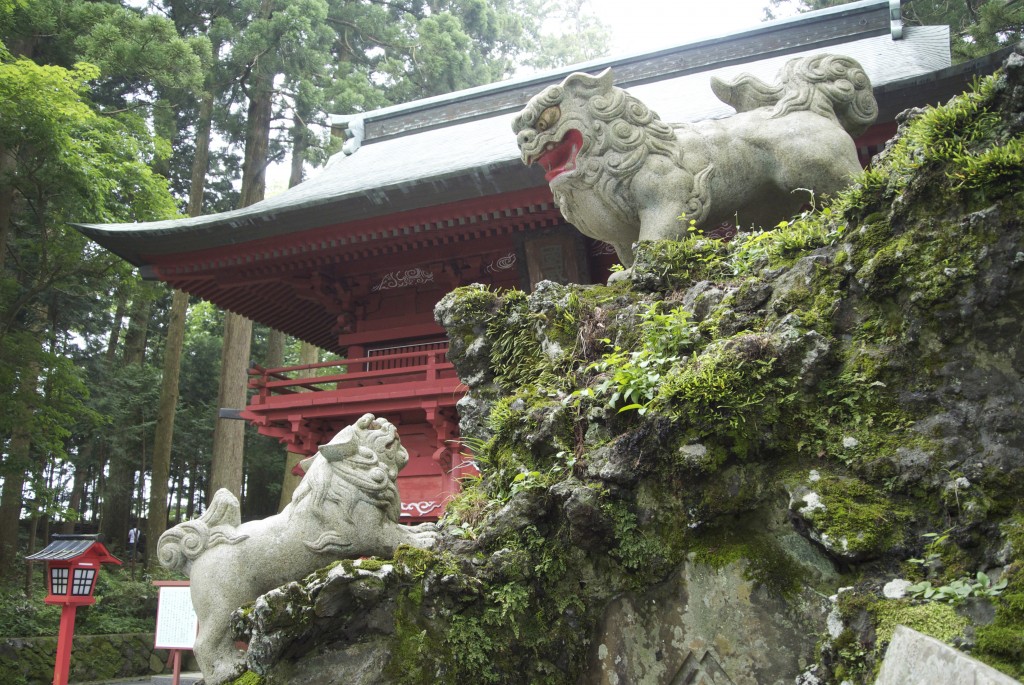
Exceptionally, you may even come across a komainu and child, as here at Fuji Sengen Jinja
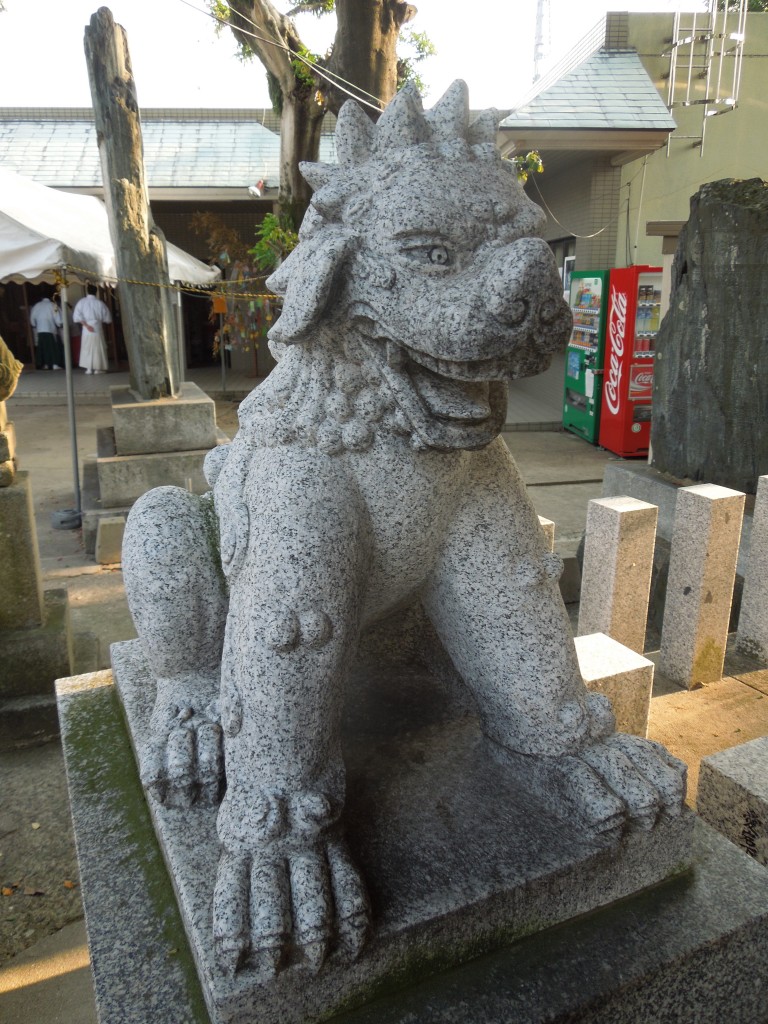
Some have a decidedly doggy character, as this example at Atago Shrine in Fukuoka
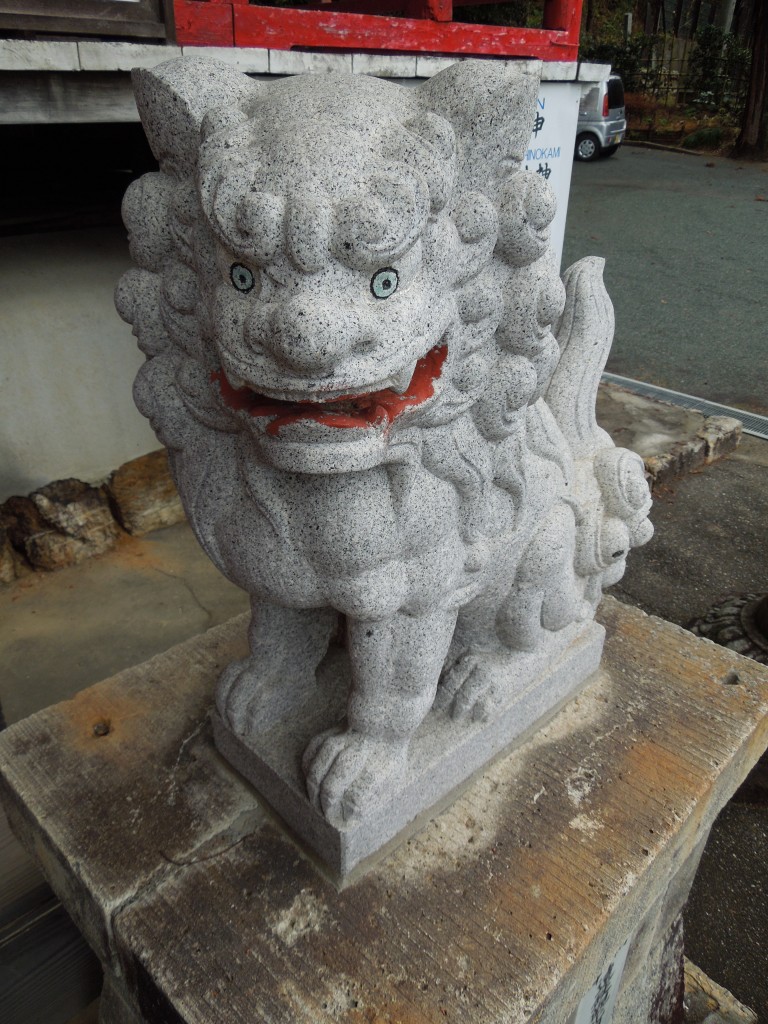
Some are touched up to add to their fierceness, as here at Hamanako
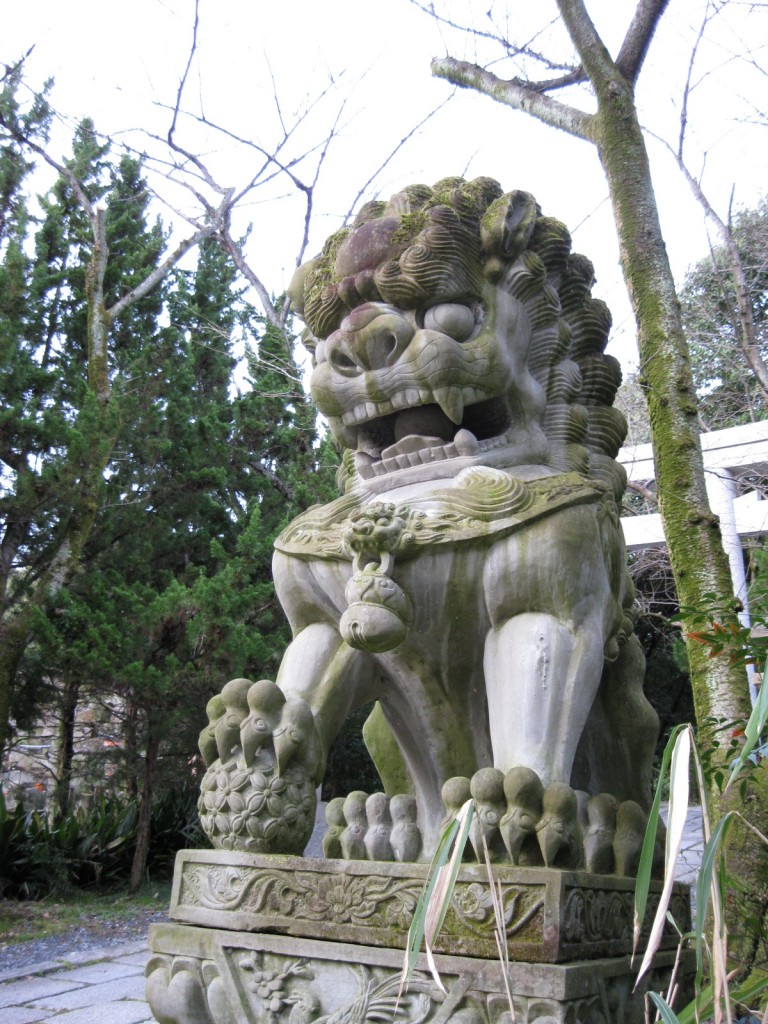
Some, as this magnificent specimen at Fushimi Inari, are elaborate works of art. Notice his paw on the ball of wisdom, a syncretic touch.
